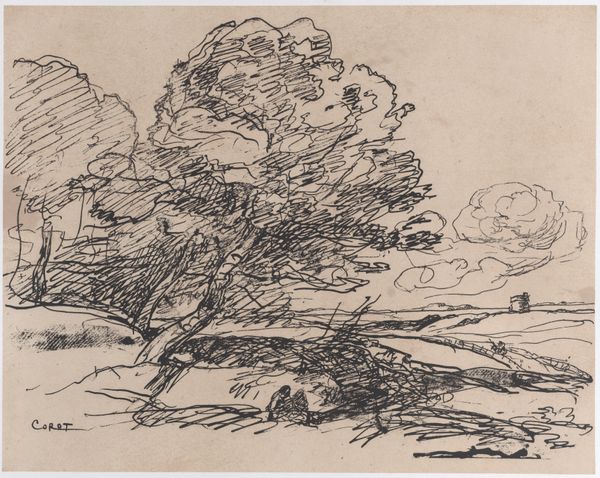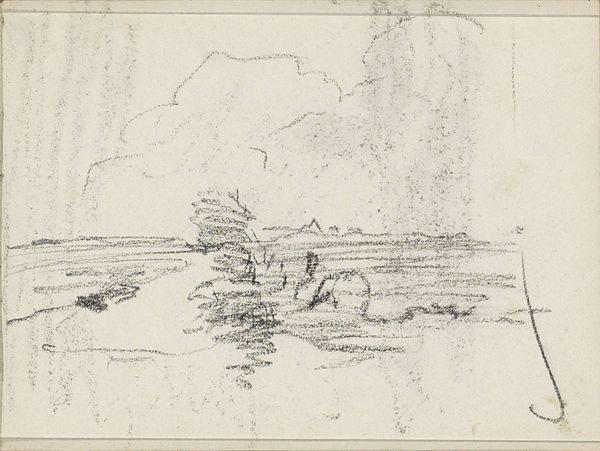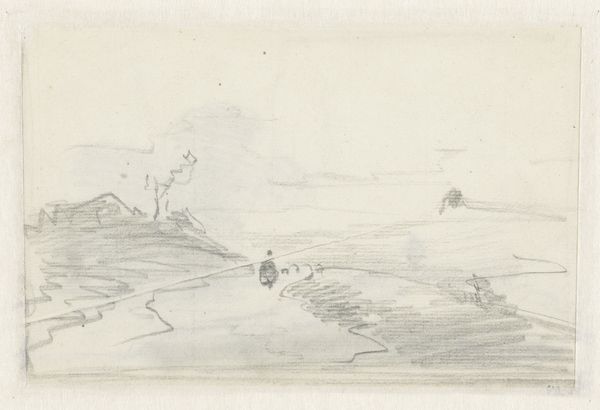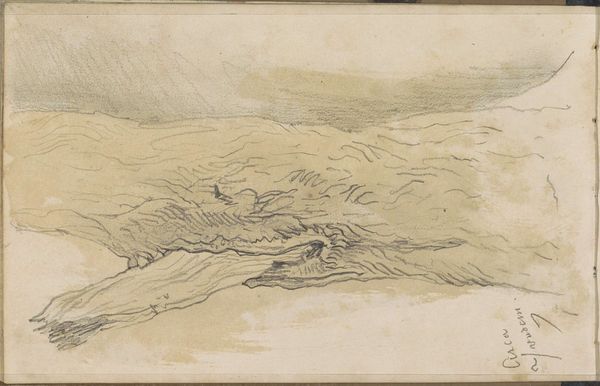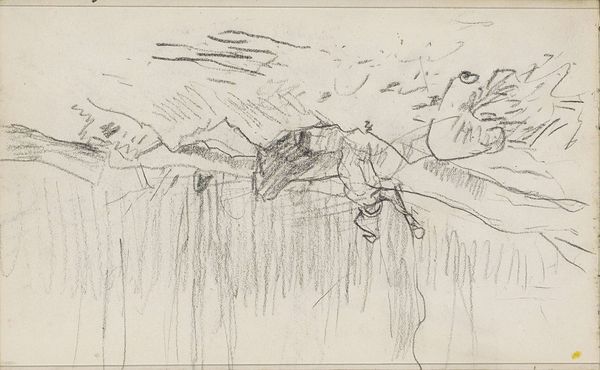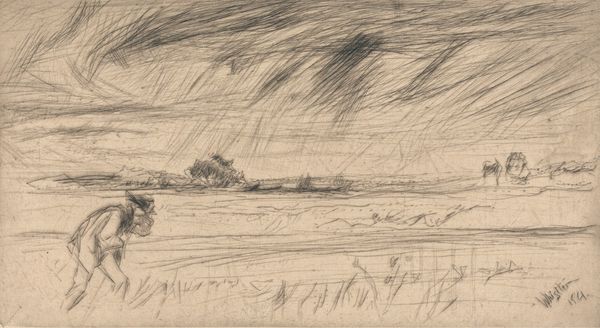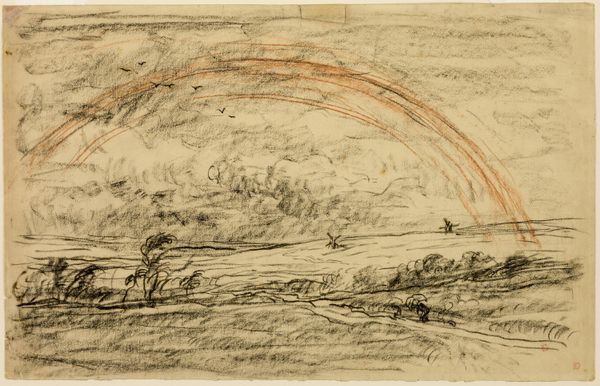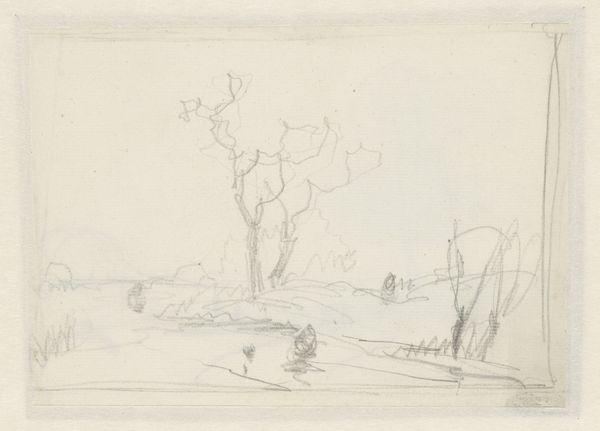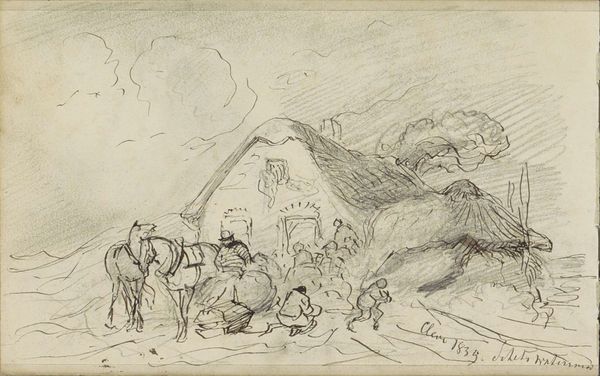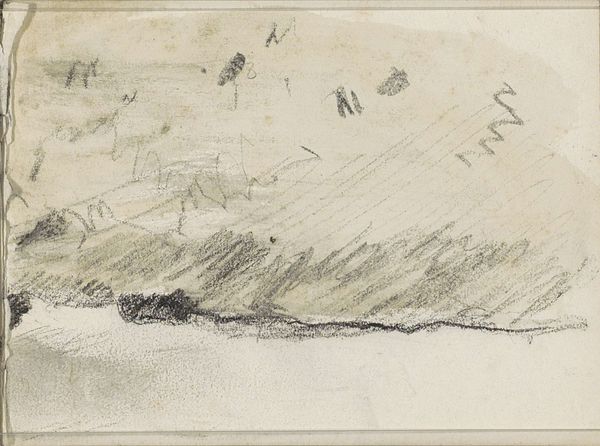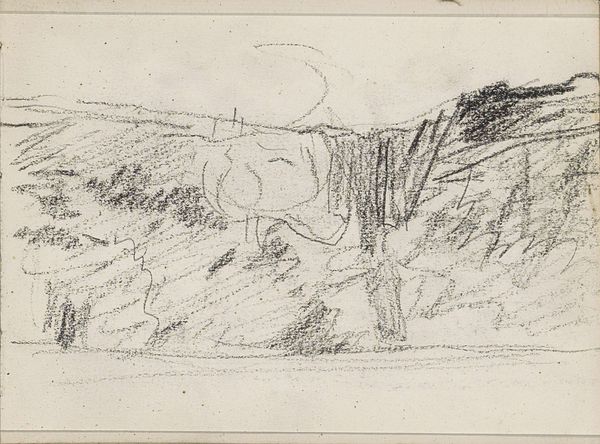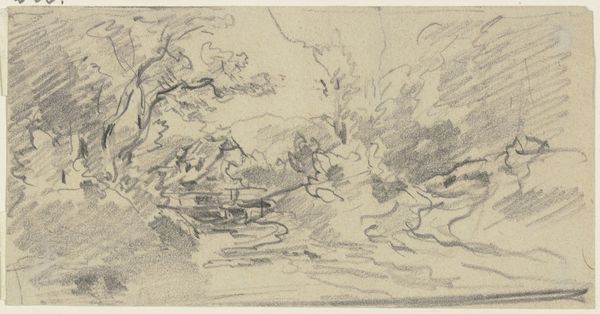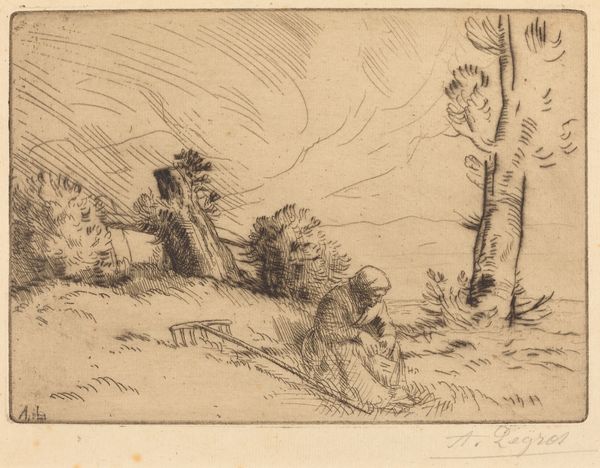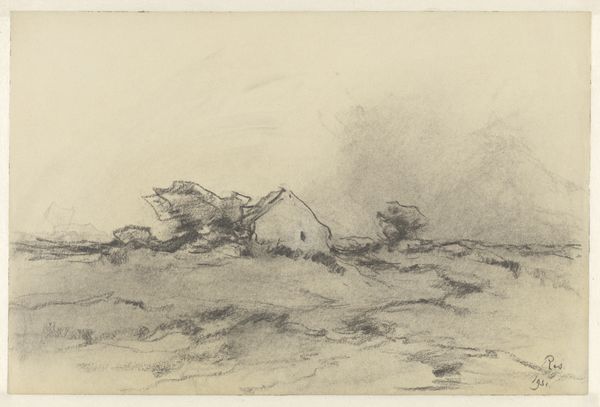
Dimensions: Image: 8 9/16 in. × 11 in. (21.8 × 28 cm) Sheet: 13 3/8 × 18 13/16 in. (34 × 47.8 cm)
Copyright: Public Domain
Curator: Standing before us is Camille Corot’s 1871 pencil drawing, "The Gust of Wind," currently residing here at the Metropolitan Museum. A landscape alive with movement, wouldn’t you say? Editor: Absolutely! The sheer energy captured with such sparse lines is remarkable. There's a palpable sense of struggle against the elements. You can almost feel the wind buffeting you. Curator: It's incredible, isn't it? Notice how Corot uses the tilted trees to lead our eye across the scene. Those lines aren't just depicting form; they’re conveying the force of the wind. The slight figure struggling against it… I find that touch both subtle and heartbreaking. Like all of us trying to make our way in the world! Editor: And look at the repetition of angled lines – not just in the trees, but also in the landscape, creating this wonderful dynamic composition. The drawing emphasizes structure. We can see Corot investigating the underlying architecture of the scene, moving beyond mere representation. Form is the dominant subject here, more so than wind. Curator: You are probably right! What's really interesting, though, is that despite all the angular lines there is some sort of peace within the chaos. Perhaps because, though this landscape bends and moves, nothing actually breaks? The people survive, the houses survive and the tree finds a way, even at a difficult angle, to live on! Editor: A keen observation, suggesting a balance. But this is also evident on the right side. See the carefully hatched shadows? Corot's mastery isn't only evident in conveying motion. The structural balance, the placement of the small building is just superb. Curator: Exactly! So, while Corot gives us this dramatic spectacle of a world swayed by external forces, he simultaneously underscores its fundamental resilience. Editor: In essence, he has laid bare nature's powerful ability to shape, and our capacity to grasp such shaping. Curator: Indeed. It makes one think about our own capacities, too. After viewing Corot's sketch, perhaps, we feel newly inclined to embrace our potential! Editor: Yes, I'll keep his lines and his message of a landscape moving under force, with a beautiful horizon ahead.
Comments
No comments
Be the first to comment and join the conversation on the ultimate creative platform.
